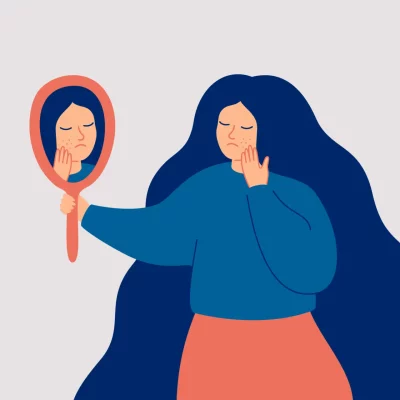Do you pull at your eyebrows, eyelashes, or other body hair during stress or anxiety? You may be experiencing a disorder called Trichotillomania, a hair-pulling disorder characterized by repetitive pulling and body-focused repetitive behaviors.
This disorder shares some characteristics with obsessive-compulsive disorder, but is Trichotillomania OCD? This post will detail Trichotillomania, Obsessive Compulsive Disorder, behaviors, causes, treatments, and more. First, let’s define what OCD is.
What Is Obsessive Compulsive Disorder (OCD)?
Obsessive-Compulsive Disorder, is an anxiety disorder characterized by intrusive thoughts that produce uneasiness, apprehension, fear, or worry. People with OCD feel the need to check things repeatedly, perform certain routines repeatedly (called “rituals”), and have specific thoughts frequently (called “obsessions”). OCD affects people of all ages and walks of life and occurs in approximately 2-3% of the population.
The Different Types Of OCD:
There are several types of OCD, including contamination/washing compulsions; ordering/arranging compulsions; hoarding; ruminating/doubting compulsions; repeating rituals; counting rituals; checking rituals. Each type has its own set of obsessions which lead to persistent behaviors that can be disruptive to daily life.
Common Symptoms And Behaviors Of OCD:
- Intrusive thoughts
- Anxiety
- Checking things repeatedly
- Performing certain rituals repeatedly
- Having certain thoughts frequently
- Avoidance of situations due to fear or anxiety
- Feeling a need for symmetry and organization
- Perfectionism
What Is Trichotillomania?
Trichotillomania (TTM) is an impulse control disorder characterized by the repeated urge to pull out one’s hair. Hair can be pulled from any body part, such as the scalp, eyebrows, eyelashes, arms, and legs. People with TTM often feel a sense of relief after pulling out their hair, leading them to continue this behavior. Sometimes, automatic hair-pulling can occur subconsciously during times of distress.
Common Trichotillomania Behaviors:
- repetitive pulling of hair from any part of the body, such as the scalp, eyebrows, eyelashes, arms and legs
- feeling a sense of relief after pulling out their hair which leads them to continue this behavior
- repeatedly checking for hairs that have been pulled out
- compulsively examining pulled hairs in mirrors or other reflective surfaces
- trying to hide any evidence of hair loss by wearing hats or wigs and avoiding activities like swimming that might reveal bald spots or patches on the head
Side Effects/Results From Trichotillomania Over Time:
- noticeable hair loss and thinning
- bald patches
- missing eyelashes
- damage to follicles that can lead to permanent damage
- Scarring on areas where hair was pulled from may result due to frequent manipulation of skin tissues around follicles resulting in raised bumps or indentations on the scalp (also known as trichodynia)
- low self-esteem due to visible signs of hair loss leading some individuals with
It is important to note that, depending on the severity of the hair pulling, a person might need to seek medical advice to ensure their skin and hair are not experiencing damage or infection. In severe cases, skin grafting may be necessary if excessive hair pulling causes intense injury to the surface of the skin.
Is Trichotillomania OCD?
Trichotillomania and Obsessive Compulsive Disorder have similar characteristics but are not the same. OCD is an anxiety disorder, while TTM is an impulse control disorder.
In short, people with Trichotillomania are fueled by the reward of positive feelings and relief when they engage in hair-pulling. In contrast, those with OCD experience intrusive thoughts, negative emotions, and feelings of significant distress when they pull their hair out.
What Can Trigger Trichotillomania?
Trichotillomania is triggered by stress and anxiety and is often a result of underlying mental health conditions such as major depressive disorder, bipolar disorder, and OCD. It can also be triggered by distress, low self-esteem, perceived defects in appearance, or an inability to control impulses.
When someone experiences high levels of distress or anxiety, conscious or automatic hair-pulling can alleviate those negative feelings, which temporarily increases dopamine. But the relief may be short-lived. The adverse effects can create even more negative emotions to manage with the condition that caused the reason for anxiety and stress in the first place.
In addition, people with Trichotillomania can experience shame and embarrassment about their hair pulling due to society’s negative attitudes towards this behavior, which can also cyclically perpetuate the behavior. As a result, many individuals feel isolated and struggle to seek help for their condition.
Lastly, TTM commonly occurs in tandem with other conditions, such as OCD, and other body-focused repetitive behaviors like Dermatillomania or skin-picking disorder (SPD).
Do Genetic Factors Cause Trichotillomania?
Whether genetics plays a role in the development of Trichotillomania is still being investigated. While no known genetic causes exist, studies have shown that some families are prone to the disorder. This suggests that certain genetic risk factors could make a person more likely to develop TTM.
For example, it’s been found that if one identical twin has TTM, their co-twin has a 20% chance of having the condition as well. More research needs to be done regarding the connection between twins’ DNA and TTM, but most studies suggest some link between the two. However, the percentages of twins both having TTM vary by study.
Furthermore, research has suggested that serotonin and dopamine levels can contribute to Trichotillomania, which could be linked to genetic makeup since these hormones regulate mood.
For example, one study showed higher dopamine levels among participants with Trichotillomania than those without the condition, indicating a possible link between dopamine and hair-pulling behavior.
Additionally, serotonin receptors have been identified in areas of the brain responsible for impulse control – suggesting that an imbalance or deficiency in this hormone might be associated with TTM behavior.
At this point, more research is needed before any definitive conclusions can be made about a possible genetic connection between TTM and specific genes or hormones.
Another factor that can impact the presence of TTM, in addition to concurrent mental health disorders and potential genetic links, is age. This disorder usually begins between ages 10 to 13 and can be a lifelong issue if not treated.
How is Trichotillomania Diagnosed?
Trichotillomania can be challenging to diagnose, as it often appears in tandem with other mental illnesses. To diagnose TTM, medical professionals will consider an individual’s history of hair pulling, the duration and severity of their symptoms, and additional factors such as family history.
Typically, a doctor or mental health professional will ask questions regarding the presence of specific symptoms associated with TTM.
These questions could include:
- How long have you been pulling your hair out?
- How often does it happen?
- What type of emotions or feelings do you associate with doing so?
- What kind of methods have you used to try to stop?
The individual’s response to these questions can help indicate if they are suffering from Trichotillomania.
A doctor may also look for physical signs that suggest TTM, such as bald patches or areas of broken and thinning hair. If these signs are present, the doctor may refer the patient for further psychological testing or a comprehensive psychological assessment.
This assessment could include assessing an individual’s emotional well-being by exploring any underlying mental health issues they might have. It can also involve examining any family history related to compulsive behavior that could be causing the person’s hair-pulling behavior.
Treatments for Trichotillomania
Trichotillomania is a disorder that can have long-lasting, devastating effects if left untreated. Early diagnosis is critical to preventing long-term complications and results from this mental health disorder. Luckily, treating Trichotillomania includes various treatment options for those struggling with this condition.
Cognitive Behavioral Therapy (CBT):
Cognitive behavioral therapy is one of the most effective treatments for people with Trichotillomania. CBT seeks to identify and change thoughts and behaviors related to hair pulling, helping people learn to better manage their urges and resist the urge to pull out their hair. It also focuses on changing unhealthy behaviors and attitudes that may contribute to the disorder.
Dialectical behavior therapy (DBT):
Dialectical behavior therapy is another treatment option for people with Trichotillomania, which focuses on reducing negative thinking patterns and replacing them with positive ones. This type of therapy helps individuals become more mindful and aware of their triggers for hair pulling and develop coping skills to help deal with these triggers.
Habit reversal therapy (HRT):
Habit reversal therapy is another popular form of treatment for people with Trichotillomania. HRT works by teaching individuals how to recognize situations where they are likely to pull their hair, as well as strategies they can use to reduce the occurrence of hair pulling, or stop hair pulling all together.
Additionally, it helps individuals learn how to replace the feeling or impulse associated with pulling hair with something more productive or healthy.
Medication:
Medication can also be used in conjunction with other forms of treatment for people with Trichotillomania.
Selective serotonin reuptake inhibitors (SSRIs) are medications commonly prescribed for this condition due to their ability to regulate serotonin levels in the brain – which has been linked with compulsive behavior – as well as reducing anxiety and depression symptoms that often accompany Trichotillomania.
Lifestyle Changes:
Lifestyle changes such as getting adequate sleep, eating a balanced diet, engaging in regular exercise, socializing more often, and practicing relaxation techniques like yoga or meditation may also be beneficial in managing symptoms people with trichotillomania experience.
Support Groups and Creating a Support System:
Support groups can provide an invaluable resource for those dealing with Trichotillomania – providing understanding peers who can offer emotional support and share strategies to cope with this condition.
Having a solid personal support system is pivotal to managing stress long-term, and having trustworthy people to discuss the disorder can make a difference. This can come from parents, siblings, extended family, friends, or anyone who is compassionate and empathetic.
These support systems offer an understanding community where individuals can discuss their challenges without fear of judgment and get tips from peers on coping with their triggers and urges.
How to Seek Help
Seeking medical advice and help for people with Trichotillomania can be a daunting experience, but treatment is vital for managing this disorder effectively.
The first step in seeking help is finding a qualified therapist specializing in Trichotillomania and other obsessive-compulsive disorders (OCD). A therapist experienced with this condition is important so they can properly assess your symptoms and develop an appropriate treatment plan. Many therapists will also provide referrals to psychiatrists or other medical professionals who may be able to provide additional assistance.
With a support system, a qualified therapist or medical professional, and utilizing treatment resources combined, achieving a successful recovery from Trichotillomania is possible!
Conclusion
Trichotillomania is a disorder that can have serious impacts on an individual’s life, but with the right help and support, recovery from this condition is possible. As mentioned earlier, TTM isn’t classified as OCD – it has its own set of unique symptoms, and treatment must be tailored accordingly.
However, this disorder often presents with OCD or other mental health disorders, so seeking help from a professional therapist is crucial in diagnosing and treating all underlying conditions.
Don’t feel ashamed or embarrassed about seeking help; there are people ready to listen and offer understanding without judgment. If you think you may be suffering from Trichotillomania or have other questions about your mental health, call us or make an appointment to take the first step to healing today!








